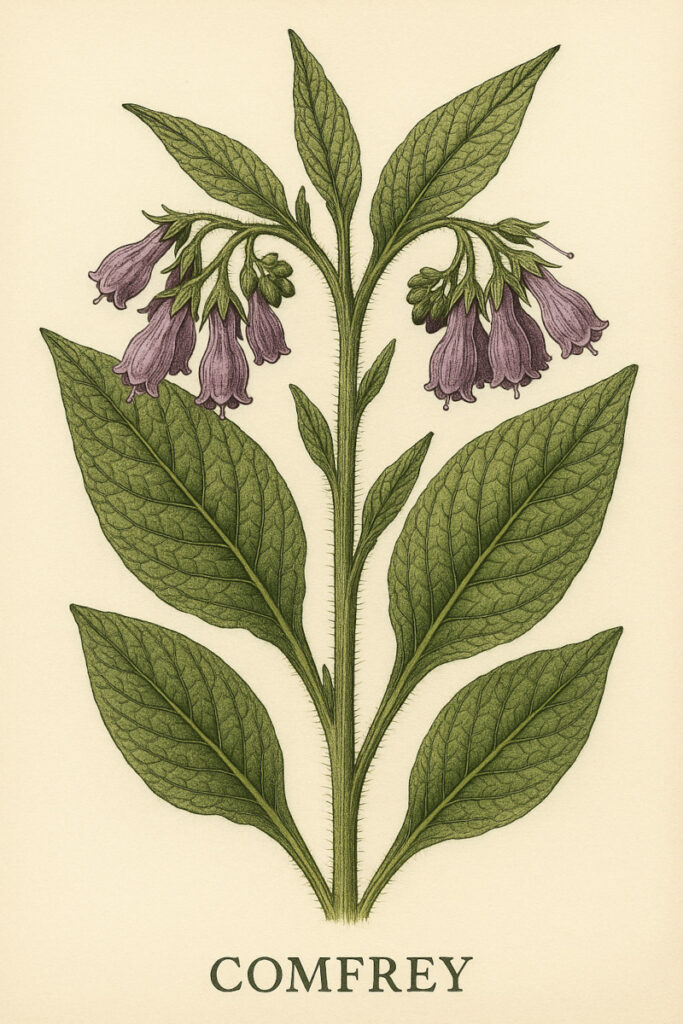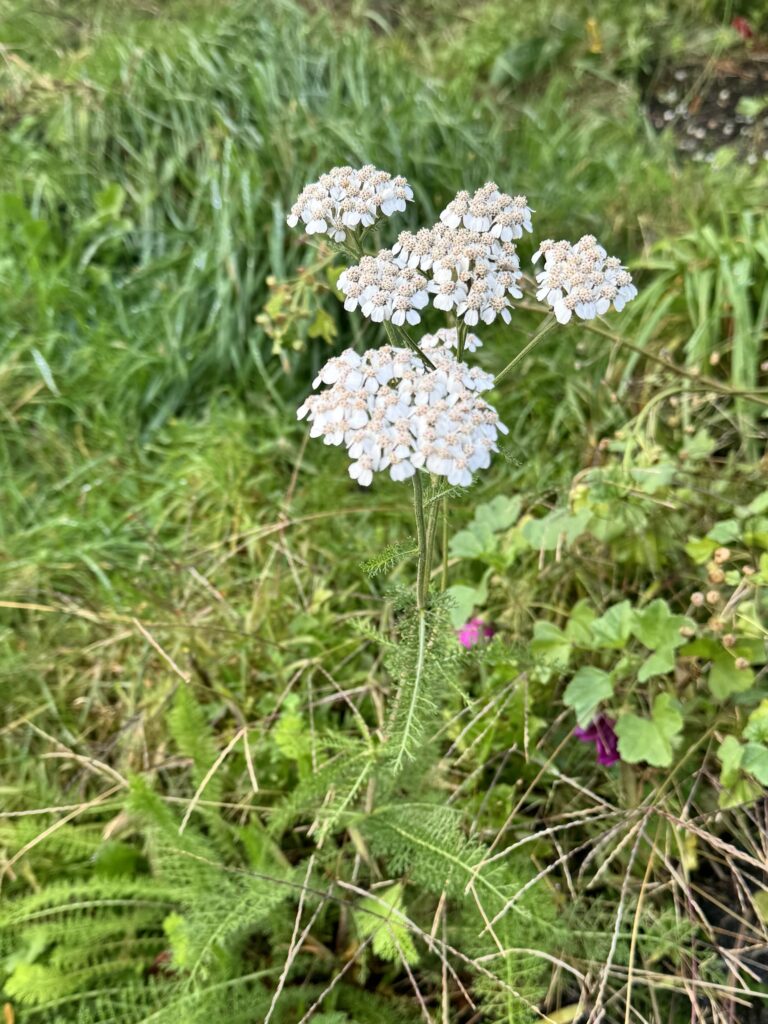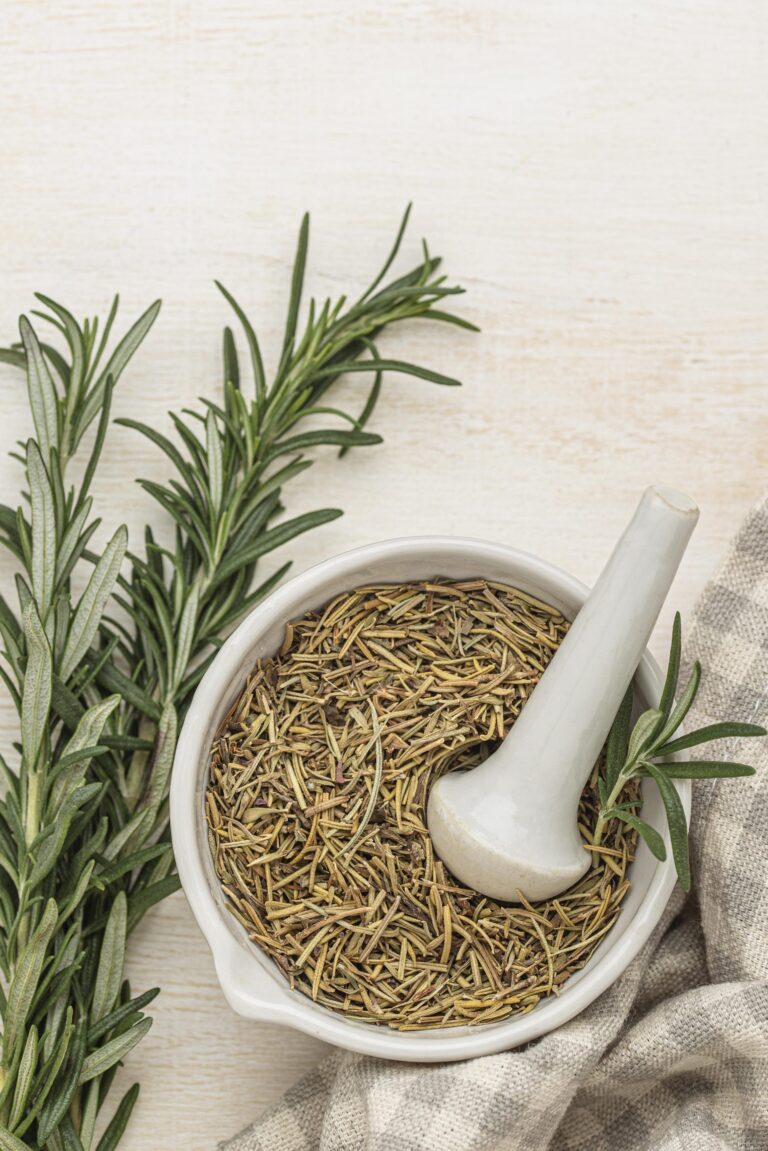Heal Wounds with Comfrey Naturally: A Complete Herbal Guide
Ahh, comfrey. It feels like an old friend at this point. It’s one of my go-to herbs and I like to always have it on hand. When I moved to a new place, it was one of the first medicinal herbs I had to make sure to plant. Learn how you can not only heal wounds with comfrey but do so much more!
*As an Amazon Associate I may earn from qualifying purchases at no cost to you.
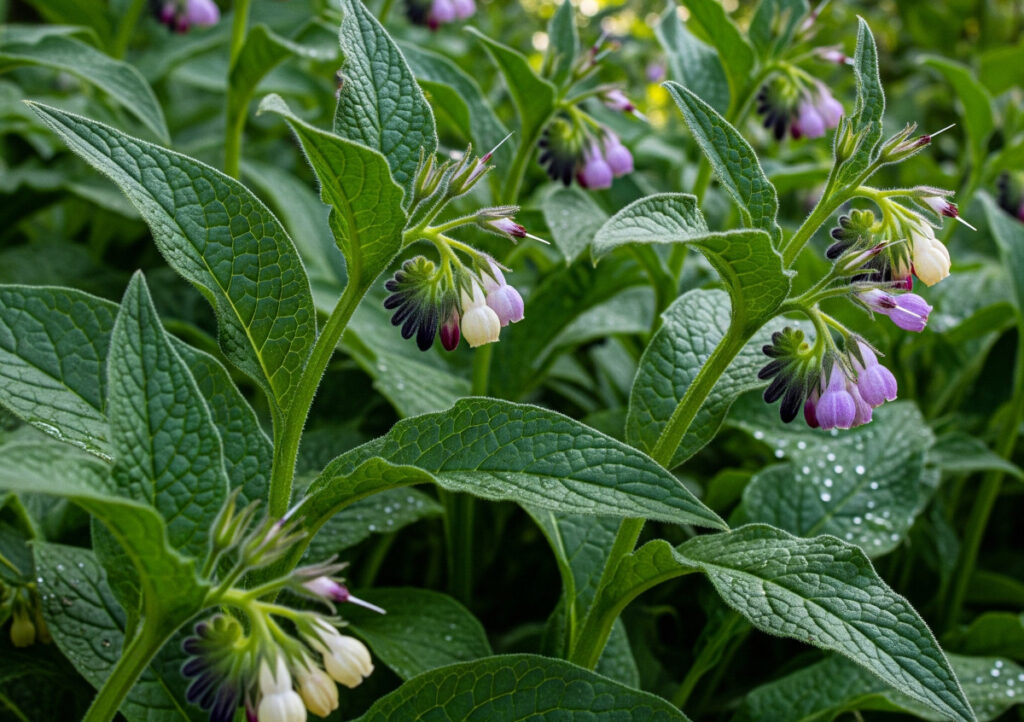
How to Identify, Propagate and Harvest Comfrey
Comfrey is a lovely plant that can grow about 2 feet all. It has hairy leaves that have intricate vein-like patterns on them that protrude from the stem like a wing. The flowers are small and delicate when they bloom. They can be purple, white, or pink.
A long taproot makes this plant virtually indestructible. Your significant other mowed over it? No problem! Comfrey will likely grow right back. It also multiplies quickly, so watch out where you plant it. You may just find that small patch becomes much bigger over a few years.
Native to Western Asia and Europe, comfrey can now be found around the world. The plant is best propagated by root cuttings. The plant does produce seeds, but they are not very viable, so germination tends to be quite low. It’s much less frustrating to take a root cutting and plant that instead. Comfrey’s hardy and will sprout from the cutting.
When harvesting comfrey for medicinal purposes, it’s best to harvest it before it flowers. This is a when the plant has the most nutrients and highest amount of medicinal properties. You can harvest the leaves, stems, and roots for medicine.
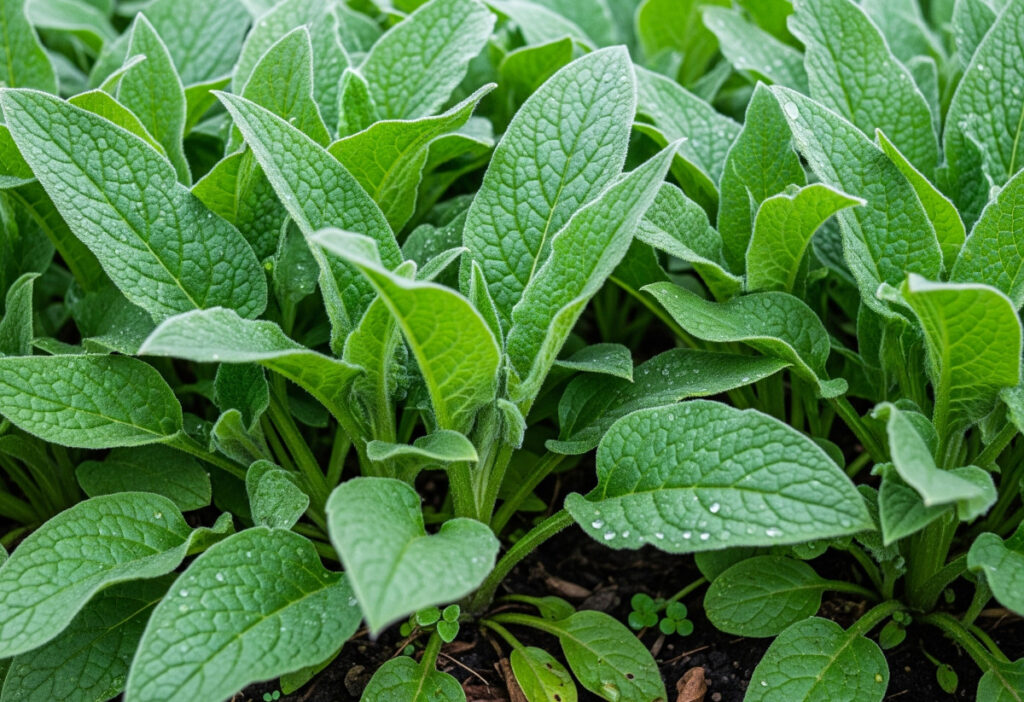
Medicinal Properties of Comfrey
*I am not a doctor nor is this medical advice. Please consult your doctor before starting any medicinal herbs.
I’ve personally used comfrey on myself and livestock with great success. Scientific studies have used it on children as young as 3 without issue, but consult with your pediatrician to verify it’s right for your small child.
Heal Wounds With Comfrey
When it comes to healing wounds, comfrey is a powerhouse. It can tackle almost any type of wound. Don’t use it on puncture or deep wounds, and it’s not the best choice for burns. Comfrey is a star with pretty much everything else, though.
Comfrey helps wounds heal in several ways. It triggers skin cell division which helps regenerate those damaged cells and close wounds. Not only can it help skin cells propagate, it also helps tissue, bone and cartilage cell growth as well. And lastly, it improves collagen deposition. These three things, along with a couple of other additional properties, make comfrey essential to healing skin wounds.
Comfrey is so good at promoting skin cell division that it triggers this reaction quite quickly. This is great for more superficial wounds. But if you have a puncture wound or another deep wound it can cause problems. The quick acting cell division can close the surface of the wound before the deeper tissue has the chance to heal. There is the potential for trapping infections or creating abscesses in the deep tissue of the wound. Then you’ll have to reopen the wound, clear it out, and let it heal all over again. Other herbs are perfect for these types of wounds, just not comfrey.
Inflammation
Anti-inflammatory properties go hand in hand with healing wounds. Damage to any part of your body causes inflammation as your body reacts to it. Comfrey is exceptional at dealing with inflammation.
Inflammation caused by abrasions are one type that comfrey tackles, but it can go much deeper than that. Injuries such as sprains, muscle strains, and pulled muscles and ligaments are quite common. Using comfrey can help tackle the inflammation and swelling caused by these injuries. This, along with the healing qualities noted above, can help these types of injuries heal faster.
Tendonitis is an inflammatory condition that causes the tendons connecting muscles to bone to become inflamed. Studies showed that comfrey can help relieve this inflammation, which also helps relieve the pain as well. Common examples of tendonitis are tennis elbow, achilles tendonitis, and golfer’s elbow among many others.
Arthritis is a chronic condition characterized by joint inflammation. Creams containing comfrey extract have been shown to significantly improve symptoms of arthritis, relieving inflammation and pain from this condition. It has also shown to improve a person’s range of motion.
Pain Relief
What good would a potent wound healing herb be without pain relieving qualities? Luckily, comfrey has your back, quite literally!
Reducing pain is often a side effect of reducing inflammation, since inflammation tends to cause us pain. Comfrey can go beyond that.
Myalgia is a condition which causes muscle pain that comfrey can help relieve symptoms for.
There have also been many studies using comfrey cream for back pain. These studies showed that comfrey can significantly relieve both lower and upper back pain. I can even personally attest to this.
One day while doing my daily farm chores, I did something that caused my back to start hurting. My first thought was “where’s my comfrey oil” which I conveniently have in the barn for when my animals inevitably hurt themselves. I took some and rubbed it all over my back. Within an hour or so my back felt so much better. I really do love this plant!
Just last week I stepped wrong on evening and hurt my achilles tendon. Once again I turned to comfrey oil. I put some on a paper towel, placed it on my heal, and used my sock to keep it in place. By the next morning, it felt better. I took the poultice I had made off and put a fresh one on with more comfrey oil. By that night, the pain was completely gone.
Other Skin Ailments Comfrey Can Help With
In addition to everything above, comfrey can also help with the following skin and muscle ailments:
- Gonarthrosis – degenerative knee disease where the cartilage starts breaking down
- Thrombophlebitis – Inflammation of a vein in the lower leg due to a blood clot often caused by inactivity
- Atopic Dermatitis – inflamed skin condition often found in infants and children
- Chronic Varicose Ulceration – Open, non-healing sore on the lower leg
- Skin redness
- Bed sores
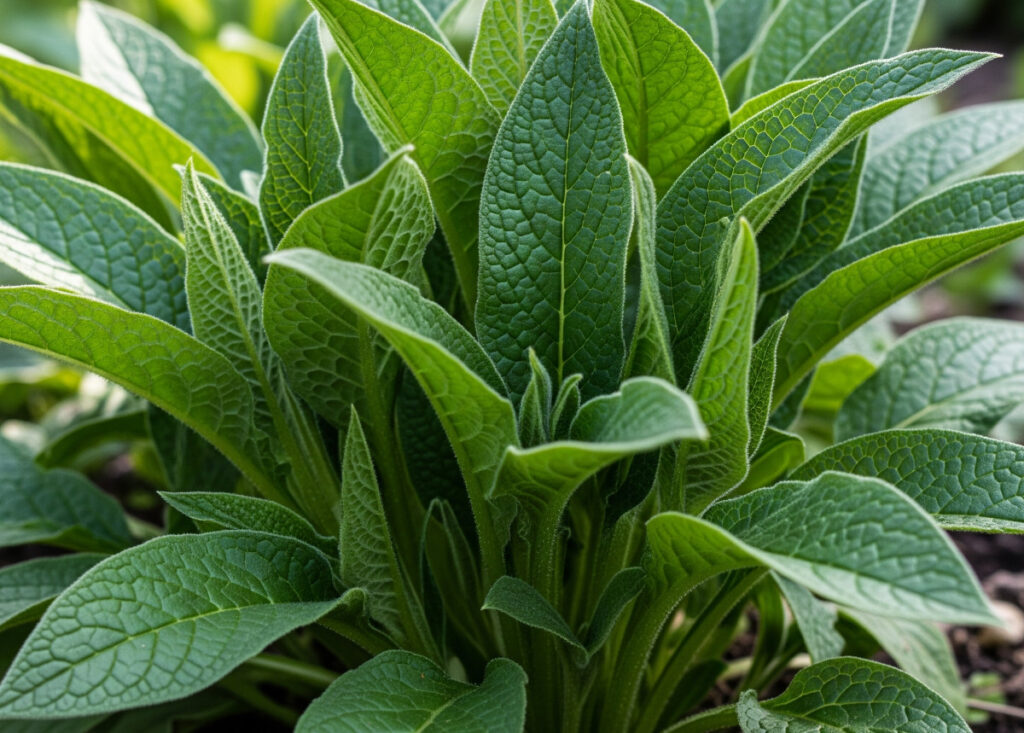
How You Can Unlock the Health Benefits of Comfrey
There are several ways you can use comfrey as medicine:
- Make a tea
- Use as a poultice
- Use it as a tincture
- Infuse it in oil
Make a Tea
To make a tea with comfrey, take about a tablespoon of dried plant matter and infuse it into about 8 oz of hot water. You can buy reusable tea bags or use tea infusers. I prefer the tea infusers as I find them easier to clean than tea bags.
Once you place the plant matter in the cup, cover the cup with a lid, plate, or something else so the steam does not escape. The steam contains essential oils and medicinal properties, you don’t want to lose them to the air!
Let steep for about 10-15 minutes and enjoy your tea or use it for a poultice!
Making a Poultice
You can prepare the plant material several different ways for a poultice. Prepare it as a tea as described above, then soak a piece of material in the tea. A piece of cotton or muslin material works great, but anything that will soak up the liquid will be fine.
You can also make a decoction, which is like a tea. Take 1 oz of dried plant material per quart of boiling water. Pour the boiling water over the plant material, place a lid on, and let it cool completely. This is a great extraction method, you can also drink a decoction just like a tea. Once prepared, use a piece of material to soak up the infused water.
You can also use an oil infusion for a poultice.
For teas, decoctions and oil infusions, place the soaked material straight onto the wound or other place you would like the medicine from the plant to be absorbed.
The fourth option is to use the plant material straight out of the ground. Crush it up to release the juices of the plant. Place the crushed-up plant material directly where you need the medicine. You can hold it there, but I generally tie a piece of material around it to keep the plant in place. Remove after about 20 minutes.
Making a Tincture
Tinctures typically involve alcohol but can be made with vegetable glycerin or vinegar if you do not consume alcohol. Keep in mind that when you are taking a tincture, you are taking such small amounts that it is impossible to feel any effects of alcohol.
I make a tincture by using 100 proof vodka, but you can use 80 proof if that’s all you can find. Fill a jar with fresh comfrey. I like to cut it up into smaller pieces so I can fit more in and have more surface area for the alcohol to extract from. I feel it’s important that the plant be fresh, so it still retains all of its water and alcohol soluble properties. Make sure you fill the jar to the top with plant material, don’t pick a jar that’s larger than the amount of plant material you have. It doesn’t matter what jar you use, just make sure it has a lid that is tight.
When your jar is full of comfrey, pour the alcohol over it until it reaches the brim of the jar. You may have to let it sit for a minute before the alcohol makes it into all the nooks and crannies. Add more alcohol if necessary. Seal the jar with the lid and sit it in a cool dark place for 6-8 weeks.
When it’s ready, strain out the plant material and your tincture is ready for use. I like using nut milk bags for straining tinctures and oils.
Tinctures are pretty powerful medicine, so start slowly when taking it. Start with just a few drops several times a day, and work up until you reach the number of drops your body needs to feel the health benefits of comfrey.
Making an Oil Infusion
An oil infusion is best used to make a salve. My favorite oil to use is avocado oil, but you can use a pure olive oil, grapeseed oil, or basically any oil that isn’t soy or canola based. I wouldn’t recommend using either of those due to their inflammatory properties.
Oil infusions should be made with dry plant material only. Oil and water are the perfect breeding ground for bacteria. if you use fresh plant material your oil is going to end up growing mold.
Fill a jar up with dried comfrey, use the stem and all. Just like with a tincture, cut the plant matter into smaller pieces to allow more surface area for extraction.
Pour the oil over the plant material up to the rim of the jar. Cap it tight and place it in a warm, dark place for 6 weeks. After 6 weeks, strain out the plant material and your oil is ready to go! These nut milk bags are my go-to for straining oils and tinctures.
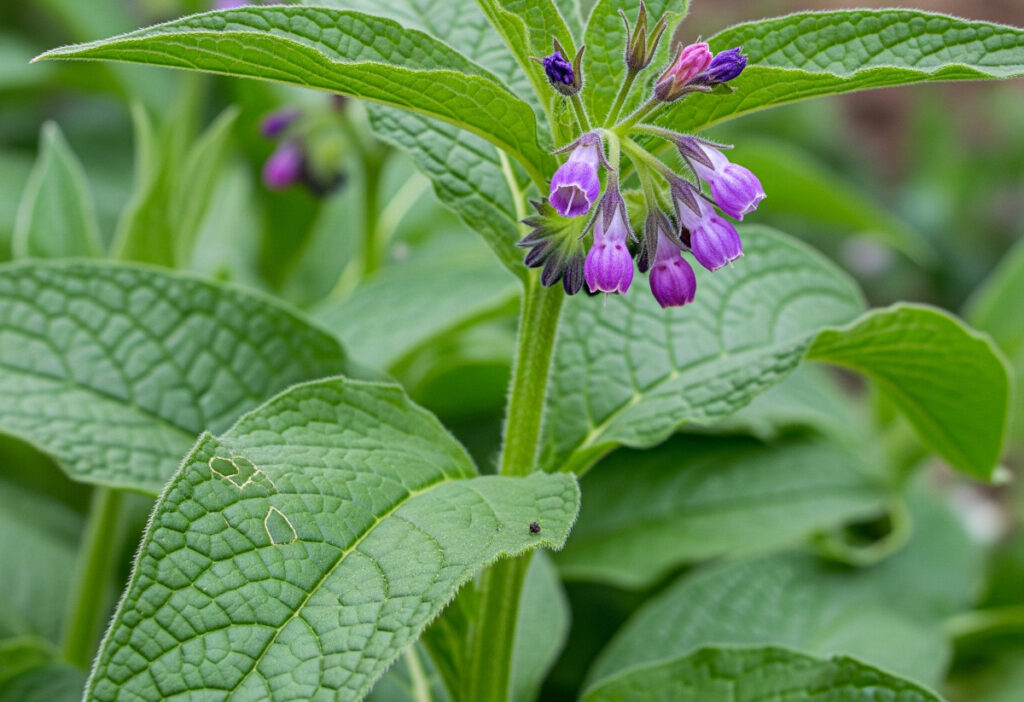
Sources:
Anti-inflammatory and antinociceptive effect of Symphytum officinale root
Other Medicinal Herbs to Check Out:
